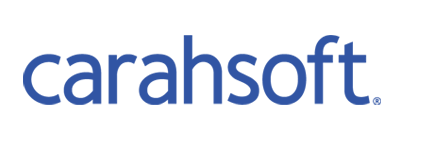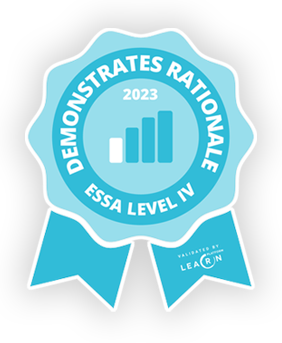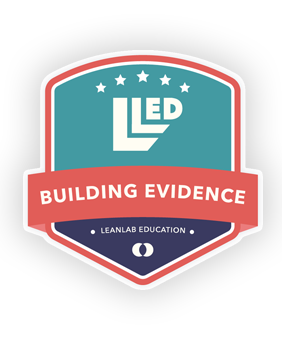Social Emotional Learning (SEL) is an educational approach that focuses on the development of social and emotional well-being, self-awareness and growth, and healthy interpersonal interactions. It refers to the process of acquiring and applying the knowledge, attitudes, and skills necessary for understanding and managing emotions, setting and achieving goals, showing empathy for others, establishing and maintaining positive relationships, and making responsible decisions.
In other words, social emotional learning is essential for all aspects of life from childhood on, as we need SEL skills in everything from school to work, from play groups to family gatherings. In this article, we’ll dive into a deeper exploration of SEL, as we discuss core competencies, pedagogical theory, and educational approaches. We’ll also examine the relationship between social emotional learning and the arts, and talk about ways to measure SEL in educational settings.
Why Is Social Emotional Learning (SEL) Important?
There is ample evidence for the benefits of SEL in educational settings and beyond. The information shared throughout this article is supported by hundreds of independent studies showing the profound benefits of SEL when it comes to academic performance, mental health and wellness, social and emotional skill development, healthy school climate, and individual lifetime outcomes.
The Collaborative for Academic, Social, and Emotional Learning (CASEL), a leader in the SEL movement for more than two decades, helps us understand the depth of this research. One of the most significant SEL studies is CASEL’s meta-analysis in July 2017 evaluating nearly 97,500 students in 82 schools and assessing their progress from six months to 18 years after their exposure to school-based, universal SEL interventions. This far-reaching study follows up CASEL’s landmark 2011 meta-analysis, an equally comprehensive research process. (References to additional studies that inform this article can be found at the end of this post.)
This research by CASEL and others consistently points to the ways that individuals with well-developed social emotional skills also have better coping skills, resilience in the face of stressful experiences, and the ability to navigate everyday challenges in work, school, and social settings.
Strong SEL in schools translates to strong academic achievement, not just in an immediate sense, but years after students have experienced SEL education. Students who participate in SEL even demonstrate academic performance 13 percentile points above their peers throughout their academic journeys.
Children who develop healthy social emotional skills experience less anxiety and depression than those who haven’t been exposed to direct SEL education. And the individual impact of SEL is also a collective benefit; students who’ve experienced SEL in schools tend to trust their peers and teachers more and report a stronger sense of safety and feelings of inclusion and belonging.
Early focus on social and emotional learning leads to the development of healthy life skills later on. Students with strong SEL skills more often succeed in all areas of life, going on to graduate from high school, enroll in post-secondary education, and acquire stable employment—all of which add to lifelong happiness and the creation of a healthier society.
The Five SEL Competencies
To understand social emotional learning more deeply, it’s important to know about the five SEL core competencies that CASEL has laid out:
1.Self-Awareness: This competency involves recognizing and understanding one’s own emotions, strengths, limitations, and values. It also includes developing a sense of self-confidence and maintaining a positive self-image.
2. Self-Management: Self-management encompasses the ability to regulate one’s emotions, thoughts, and behaviors effectively. It involves setting and working towards personal and academic goals, managing stress, and demonstrating self-discipline and perseverance.
3. Social Awareness: Social awareness amounts to understanding and empathizing with the feelings, needs, and perspectives of others. It includes developing empathy, appreciating diversity, and demonstrating respect and care for others.
4. Relationship Skills: This competency focuses on building and maintaining healthy relationships. It involves effective communication, active listening, cooperation, conflict resolution, and the ability to work collaboratively in diverse groups.
5. Responsible Decision-Making: Responsible decision-making is the ability to make ethical and constructive choices. It includes considering the consequences of one’s actions, evaluating potential risks, and problem-solving in various situations.
It’s worth noting that SEL interventions addressing all of the CASEL 5 result in the increase of participating students’ academic performance by 11 percentile points in comparison to their peers without access to SEL education.
The Pedagogical Theory of SEL
Social emotional learning is based on the belief that emotional well-being and social competence are fundamental to academic achievement and overall success in life. Before the development of SEL education, pedagogical theorists often regarded reason and emotion as separate processes, with the former controlling the latter. We now know that these two processes are actually inextricably linked.
Social and emotional learning has a long history and was even central to Plato’s argument in The Republic, which called for the development of morals and character, alongside standard lessons in math, science, physical education, and the arts to “produce citizens of good character.”
In the United States, SEL can trace its roots back to pedagogical discourse of the early twentieth century, but it began picking up traction in the mid-1990s with the creation of CASEL and the release of New York Times science reporter Daniel Goleman’s popular book Emotional Intelligence: Why It Can Matter More Than IQ.
In the last few years, social and emotional learning has become more and more prevalent in schools and is now part of our national discourse about how best to support children and youth. The wide-ranging effects of the COVID-19 pandemic increased interest in social emotional learning among parents and educators as a way to combat the isolation, excessive screen time, and mental health struggles that students faced for multiple years.
Incorporating pedagogical theory into educational practice, SEL aims to provide individuals with the necessary tools to navigate their emotions, develop positive relationships, make responsible decisions, and thrive in academic and personal contexts.
How Educators Approach SEL
With social emotional learning so central to personal development and healthy relationship-building, it’s important to consider effective SEL philosophy, practices, tools, and techniques that teachers draw on in their classrooms.
SEL at All Ages
It’s advantageous, of course, to start young with SEL so that children can develop skills early on to use throughout their lives, but it’s also important to remember that it’s never too late to learn social emotional skills. Students at all grade levels can benefit from intentional SEL education, and adolescence is also an important stage for developing SEL skills. As is the case for all thoughtful instruction, the key with SEL is to meet students where they’re at.
In elementary school, SEL might involve students creating vision boards by choosing images that affect them emotionally as their minds “float” through the process of looking at magazines and other sources. In middle school, teachers can use movement activities to create classroom expectations that honor and prioritize space for sharing emotions and experiences; they can then discuss anything from how their weekends went to their emotional reactions to course material. And in high school, teachers can help students work actively on developing empathy across different perspectives when it comes to discussing and/or creating a performance, poem, graphic novel, or short story linked to core curricular standards as well.
Steps for Teaching SEL
Social emotional learning can take many forms, but the most common progression for SEL in schools follows some version of the following steps over the course of a week. SEL works best when integrated into the core curriculum. In fact, stand-alone SEL lessons often create additional labor and undue stress for teachers, but SEL linked to the core actually makes the learning process more seamless for all. Common steps for SEL teaching are:
- The teacher explains an SEL concept with text, pictures, video, and/or audio linked to a core curricular standard.
- Students practice the skill with group or peer-to-peer discussion or individual writing and reflection, while also working toward the core standard.
- The teacher reinforces the SEL concept throughout the week, sometimes reinforcing it by sending work home with students, again connected to the core.
- The teacher checks for understanding and reteaches parts of the SEL concept when necessary.
It’s important to note that SEL instruction is not unlike many forms of effective teaching—it requires careful explanation, ongoing practice, and thoughtful reinforcement. Schools and classrooms committed to SEL education create a culture where social emotional learning is integrated into the fabric of the larger educational environment. At schools where SEL is valued, students learn to name their own feelings, respect their peers’ perspectives, develop empathy, and work together productively across differences. Teachers coach students through challenges and conflicts, and then students learn to adapt these techniques and perspectives themselves.
SEL Teaching Principles
Social emotional learning activities are plentiful, so it’s sometimes tough to figure out where to start. Creating a culture of emotional learning can set the groundwork for integrating SEL into lessons that focus on core competencies. You can expect classrooms that embrace SEL education to often include some of these kinds of practices and values:
- Growth Mindset: Rather than seeing setbacks as personal failures, students and educators focus on challenges as opportunities for learning and growth, both individually and collectively. If a student acts out against another student in class, for example, there isn’t a focus on shame and “being bad,” but an emphasis on deconstructing and learning from the situation so that it’s less likely to happen again. Students can examine both their own struggles and their effect on others.
- SEL Vocabulary: Like students who adopt the growth mindset, those who use an SEL vocabulary separate the situation from the person’s value. If a student doesn’t figure out the right answer to a math problem, the message isn’t “I’m stupid,” but “I see where I didn’t follow every step of the equation, so I’ll try to remember that next time.”
- Mindfulness and Self-Soothing: When teachers emphasize mindfulness as part of their classroom culture, everyone develops a greater sense of self and group awareness, which promotes focus and care. Mindfulness can take the form of meditation or sensory exercises, or even activities that ask learners to see a problem from multiple angles. Similarly, when students encounter frustrating situations, they learn to self-soothe with breathing techniques, time out of the classroom, or kind self-talk.
- Collaboration: Students in environments that value SEL skills regularly collaborate in authentic, meaningful ways. They share responsibility equally for the success of the group because they are aware of their own and others’ contributions. They can even learn to navigate and resolve conflict on their own without a teacher’s intervention by acknowledging and adjusting their behaviors.
- Self-Expression: Students with emotional skills express themselves in myriad ways in a classroom, from voicing honest, thoughtful opinions about a discussion topic to building in-depth creative responses to course content. These responses can take many forms, and we’ll explore some of them in more depth in the section that follows.

SEL and the Arts
In the world of social emotional learning, the arts can be an invaluable part of the education process. The term “arts integration” is often used to describe arts-focused activities incorporated in the classroom, but true arts integration and, hence, deep SEL education is about more than just activities. The arts can be a real foundation of learning for students and a tool for delivering a wide range of educational content beyond the arts as well.
For example, Executive Director of Metro ECSU John Schultz used our Theater as the Arts tool with his chemistry class in an especially effective way. As he explains, “I gave my science class assigned roles of being protons, neutrons, and electrons to demonstrate the concept of an atom. Protons and neutrons move around in a huddled mass, the center of the stage of the classroom, to demonstrate what is in the atom’s nucleus. While students ran around quickly, they actually have to run at the speed of light around the nucleus as electrons. It was a great way to demonstrate the atom, and demonstrate acting responsibly.”
In this lesson, meaningful movement and embodiment (theater and dance) became the vehicle for students to grasp core curricular content, while also engaging in the SEL necessary to move around the space. Becoming protons, neutrons, and electrons also required them to work in a respectful, collaborative way that drew on their relationship and social skills, as much as their self-management and responsible decision-making.
Because social emotional learning is important to success in virtually everything we do, it’s often good for educators to integrate SEL into every week of instruction. Many art activities naturally merge SEL competencies with common core competencies and national standards.
For example, Livestream Learning Studio has seen the ways that elementary school students studying financial literacy as part of the Jump$tart National Standards can create vision boards with emotionally-resonant images in a way that addresses both those national standards and the CASEL framework. Forms of visual art like these boards, as well as performance, music, and video, provide invaluable experiences for students to express themselves creatively and collaboratively—and they deepen all five of the SEL competencies: self-awareness, self-management, social awareness, relationship skills, and responsible decision-making.
Here is just a small selection of the kinds of arts-based social emotional learning activities students might engage in that can also be used to teach core curricular goals simultaneously:
Elementary School
- Experience livestream events focused on arts integration pedagogy.
- Draw or paint a special moment or person with a focus on gratitude for this event/person.
- Create a color wheel to discuss the connection between colors and emotions.
- Listen to songs with emotional content and discuss feelings that come up, or take in music in different styles/contexts to focus on cross-cultural connections.
- Dance or move as a class to rhythms and concepts (like colors or words for emotions) shared by the teacher.
Middle School
- Play theater games rooted in collaboration and creative problem-solving. (Viola Spolin’s Theater Games for the Classroom is an especially helpful resource.)
- Create a class newspaper or online journal with visual and textual elements. (Students can also roleplay as reporters, photographers, editors, etc.)
- Write collaborative “exquisite corpse” poems, with each student taking on a line to create a whole piece in response to a course text or concept.
- Make vision boards, collages, or abstract “found” art that represents an emotional engagement with a core curricular lesson.
High School
- Write a monologue on a core curricular topic/text from someone else’s perspective to develop empathy; perform and direct each other’s work to dive further into collaboration and careful decision-making.
- Create graphic novels in pairs with one student illustrating and the other writing the story; this can serve as a creative response to a course text.
- Make podcasts that dive into complex social issues or scientific concepts that are part of the core curriculum.
- Keep personal response journals that combine visual art, creative writing, and found images and text to explore course texts and core curriculum.
These activities truly are the tip of the iceberg in terms of how the arts and social emotional learning go hand-in-hand. To learn more about ways to merge the five SEL competencies with core competencies and national standards, you can visit our Act I Literacy and Act II STEM curriculum.
How Do You Measure SEL?
Measuring SEL can be challenging, but meaningful, as it involves assessing personal and interpersonal skills, attitudes, and behaviors in complex ways. Several approaches and tools can be used to measure SEL, including:
- Self-Report Surveys: These surveys involve individuals reflecting on their own social and emotional skills, attitudes, and experiences. Questions may inquire about self-perception, self-regulation, interpersonal relationships, and decision-making abilities.
- Teacher Assessments: Teachers can provide valuable insights into students’ social and emotional learning through observations, checklists, and rating scales. They can assess behaviors such as cooperation, empathy, and problem-solving within the classroom setting.
- Direct Observation: Trained observers can assess SEL competencies by directly observing individuals in various settings. This method provides a more objective perspective on social and emotional behaviors and interactions.
- Performance Tasks: Performance tasks involve individuals engaging in activities or scenarios that require the application of SEL competencies. Assessors can evaluate their ability to manage emotions, communicate effectively, resolve conflicts, and make responsible decisions.
Each assessment method can be used on its own, but educators may want to consider employing a combination of these approaches to gain a comprehensive understanding of a student’s SEL development over time.
Social Emotional Learning in Summary
Social emotional learning is an educational approach that focuses on nurturing the social and emotional well-being of individuals at every age. Children and youth especially need the tools and environment to develop and enhance their SEL skills as they navigate the complex challenges of the 21st century. Social emotional learning teaches students how to problem-solve and overcome challenges, manage their emotions, control their impulses, and treat others with kindness and respect.
By developing self-awareness, self-management, social awareness, relationship skills, and responsible decision-making, students enhance their overall growth and positively impact their interactions with others. An early SEL education helps them understand and cope with their emotions while demonstrating empathy for others and processing the world around them. By incorporating SEL into educational practices, we can support young people as they develop the necessary competencies to succeed in school, work, and life. And the arts can help make social emotional learning an even more meaningful part of what it means to be human.
References
Cipriano, C., Strambler, M.J., Naples, L., Ha, C., Kirk, M.A., Wood, M.E., Sehgal, K., Zieher, A., Eveleigh, A., McCarthy, M.F., Funaro, M. Ponnock, A., Chow, J., & Durlak, J.A. (2023, Feb 2). Stage 2 Report: The state of the evidence for social and emotional learning: A contemporary meta-analysis of universal school-based SEL interventions. https://osf.io/mk35u/
Clarke, A.M., Sorgenfrei, M., Mulcahy, J., Davie, P., Friedrich, C., & McBride, T. (2021). Adolescent mental health: a systematic review on the effectiveness of school-based interventions. Early Intervention Foundation. https://www.eif.org.uk/report/adolescent-mental-health-a-systematic-review-on-the-effectiveness-of-school-based-interventions
Durlak, J.A., Mahoney, J.L., & Boyle, A.E. (2022). What we know, and what we need to find out about universal, school-based social and emotional learning programs for children and adolescents: A review of meta-analyses and directions for future research. Psychological Bulletin, 148(11-12), 765–782. https://doi.org/10.1037/bul0000383
Durlak, J.A., Weissberg, R.P., Dymnicki, A.B., Taylor, R.D., & Schellinger, K.B. (2011). The impact of enhancing students’ social and emotional learning: A meta-analysis of school-based universal interventions. Child Development, 82(1): 405–432. https://casel.s3.us-east-2.amazonaws.com/impact-enhancing-students-social-emotional-learning-meta-analysis-school-based-universal-interventions.pdf
Greenberg, M.T. (2023). Evidence for social and emotional learning in schools. Learning Policy Institute. https://doi.org/10.54300/928.269
Jones S.M., Kahn J. (2017). The evidence base for how we learn: Supporting students’ social, emotional, and academic development – Consensus statements of evidence from the Council of Distinguished Scientists. Washington, DC: National Commission on Social, Emotional, and Academic Development, The Aspen Institute. https://www.aspeninstitute.org/wp-content/uploads/2018/03/FINAL_CDS-Evidence-Base.pdf
Taylor, R.D., Oberle, E., Durlak, J.A., & Weissberg, R.P. (2017). Promoting positive youth development through school-based social and emotional learning interventions: A meta-analysis of follow-up effects. Child Development, 88(4): 1156–1171. https://srcd.onlinelibrary.wiley.com/doi/abs/10.1111/cdev.12864






